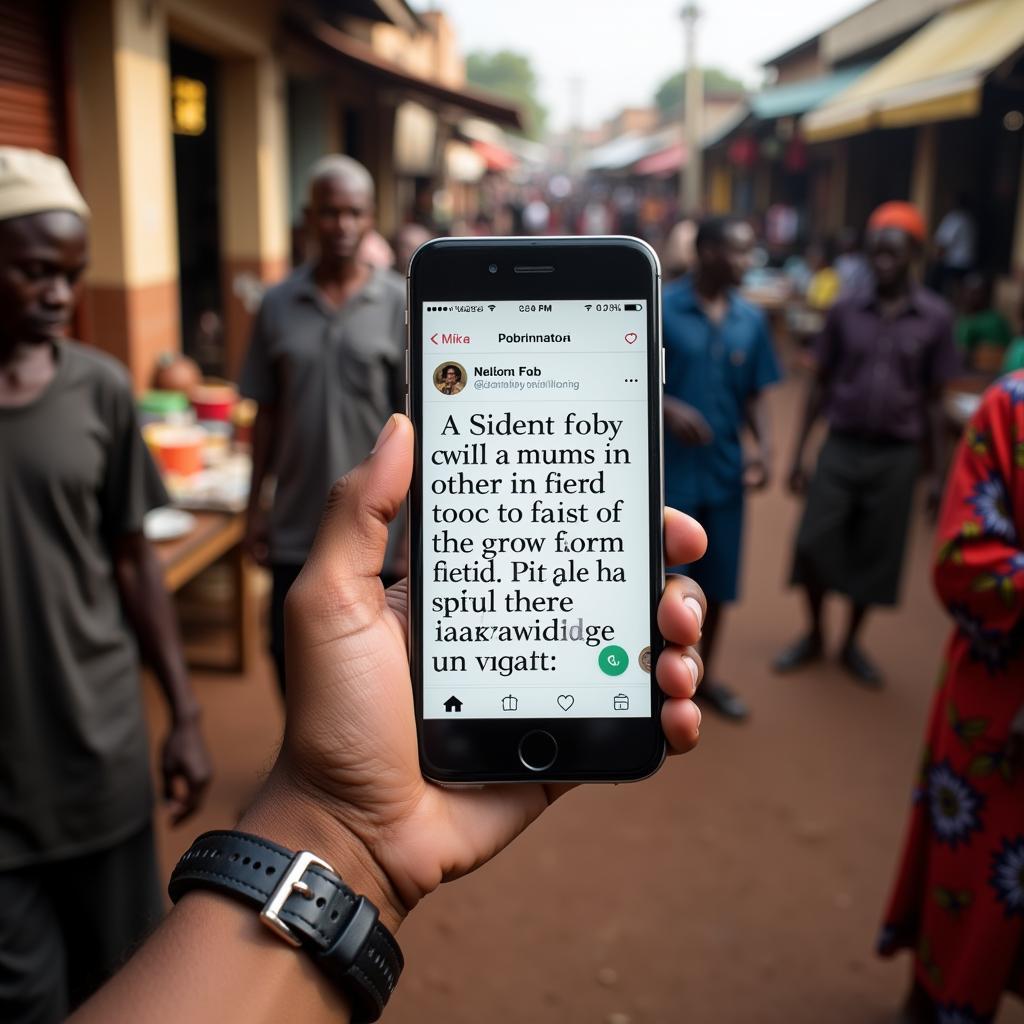Exploring the Diversity of African Language Scripts
African Language Scripts are a fascinating testament to the continent’s rich linguistic heritage. From ancient symbols carved into rock to modern alphabets adapted for digital use, these scripts tell stories of cultural exchange, innovation, and resilience. This article delves into the world of African writing systems, exploring their origins, evolution, and ongoing significance in a globalized world.
A Historical Overview of African Writing Systems
Africa is a continent of incredible linguistic diversity, with an estimated 2,000 languages spoken across its 54 countries. This diversity is reflected in the wide array of writing systems employed throughout history and in the present day. Some scripts are indigenous, developed within specific African communities, while others are adaptations of existing systems like the Latin or Arabic alphabets. The earliest known African writing system is the ancient Egyptian hieroglyphs, dating back to around 3200 BCE. These pictorial symbols represented words, sounds, and concepts, laying the foundation for later writing systems.
After this first paragraph, let’s explore the connection between African scripts and other forms of artistic expression. For instance, have you considered how these scripts influence the design of an African American mask?
Several indigenous scripts emerged across the continent over centuries, often tied to specific kingdoms or ethnic groups. The Nsibidi ideographic system used by various societies in southeastern Nigeria is a prime example. Its symbols, believed to have originated as early as the 5th century, served not only for communication but also for visual storytelling and ritual practices. Another noteworthy script is the Tifinagh alphabet, used by the Berber people of North Africa. This ancient script, with its distinct angular characters, has endured through centuries of cultural and political changes and continues to be used today.
The Influence of Arabic and Latin Scripts
With the spread of Islam and the arrival of European colonizers, the Arabic and Latin alphabets became increasingly prevalent across Africa. Many African languages were adapted to these scripts, sometimes with modifications to accommodate unique sounds and tonal variations. While this facilitated wider communication and access to literacy, it also posed challenges to the preservation of indigenous writing systems.
The adoption of Arabic and Latin scripts had a profound impact on the written form of many African languages. In some cases, existing indigenous scripts were gradually replaced, while in others, they continued to be used alongside the newer systems. The resulting linguistic landscape reflects a complex interplay of cultural influences and historical processes.
The Resurgence of Indigenous African Scripts
In recent decades, there has been a growing movement to revitalize and promote indigenous African scripts. This resurgence is driven by a desire to reclaim cultural heritage, strengthen linguistic identity, and promote linguistic diversity. Efforts are underway to standardize and modernize these scripts, making them more accessible for use in education, literature, and digital communication. Check out resources like this African language script for more information.
Digitalization and the Future of African Scripts
The digital age presents both challenges and opportunities for African language scripts. Adapting these scripts for digital platforms requires careful consideration of technical and linguistic factors. However, the internet and mobile technology also offer powerful tools for promoting these scripts, connecting communities, and preserving linguistic heritage. Do you know how crucial an African font is for digital representation?
“Preserving and promoting African language scripts is not just about preserving the past; it’s about building a future where African languages thrive in the digital age.” – Dr. Abena Agyemang, Linguist and Cultural Heritage Advocate.
 African Language Script Displayed on a Digital Device
African Language Script Displayed on a Digital Device
Conclusion
African language scripts are an integral part of the continent’s rich cultural tapestry. From ancient symbols to modern adaptations, these scripts reflect the dynamism and resilience of African languages. By understanding and appreciating the diversity of African language scripts, we can gain a deeper understanding of African cultures and contribute to the preservation of this invaluable linguistic heritage. Are you interested in learning more about preserving African culture? You might find valuable information about an African graduate scholarship focused on this area.
FAQ
-
What is the oldest known African writing system?
- The oldest known African writing system is Egyptian hieroglyphs.
-
Why are some African languages written in Arabic or Latin scripts?
- The spread of Islam and European colonization led to the adoption of Arabic and Latin scripts for many African languages.
-
Are there efforts to revive indigenous African scripts?
- Yes, there are ongoing efforts to revitalize and promote indigenous African scripts.
-
What challenges do African scripts face in the digital age?
- Adapting these scripts for digital platforms requires careful technical and linguistic consideration.
-
Why is it important to preserve African language scripts?
- Preserving African scripts is crucial for maintaining cultural heritage, strengthening linguistic identity, and promoting linguistic diversity.
-
What are some examples of indigenous African scripts?
- Nsibidi, Tifinagh, and Ge’ez are examples of indigenous African scripts.
-
Where can I find more information about African writing systems?
- You can explore academic resources, online databases, and cultural centers dedicated to African languages. You can also discover valuable insights from an African J Food Science Editor and Publisher.
Other questions you might have:
- How are African language scripts used in education?
- What are the challenges of translating African languages?
- What is the future of African languages in a globalized world?
For further information or assistance, please contact us: Phone: +255768904061, Email: [email protected] or visit us at Mbarali DC Mawindi, Kangaga, Tanzania. Our customer service team is available 24/7.
